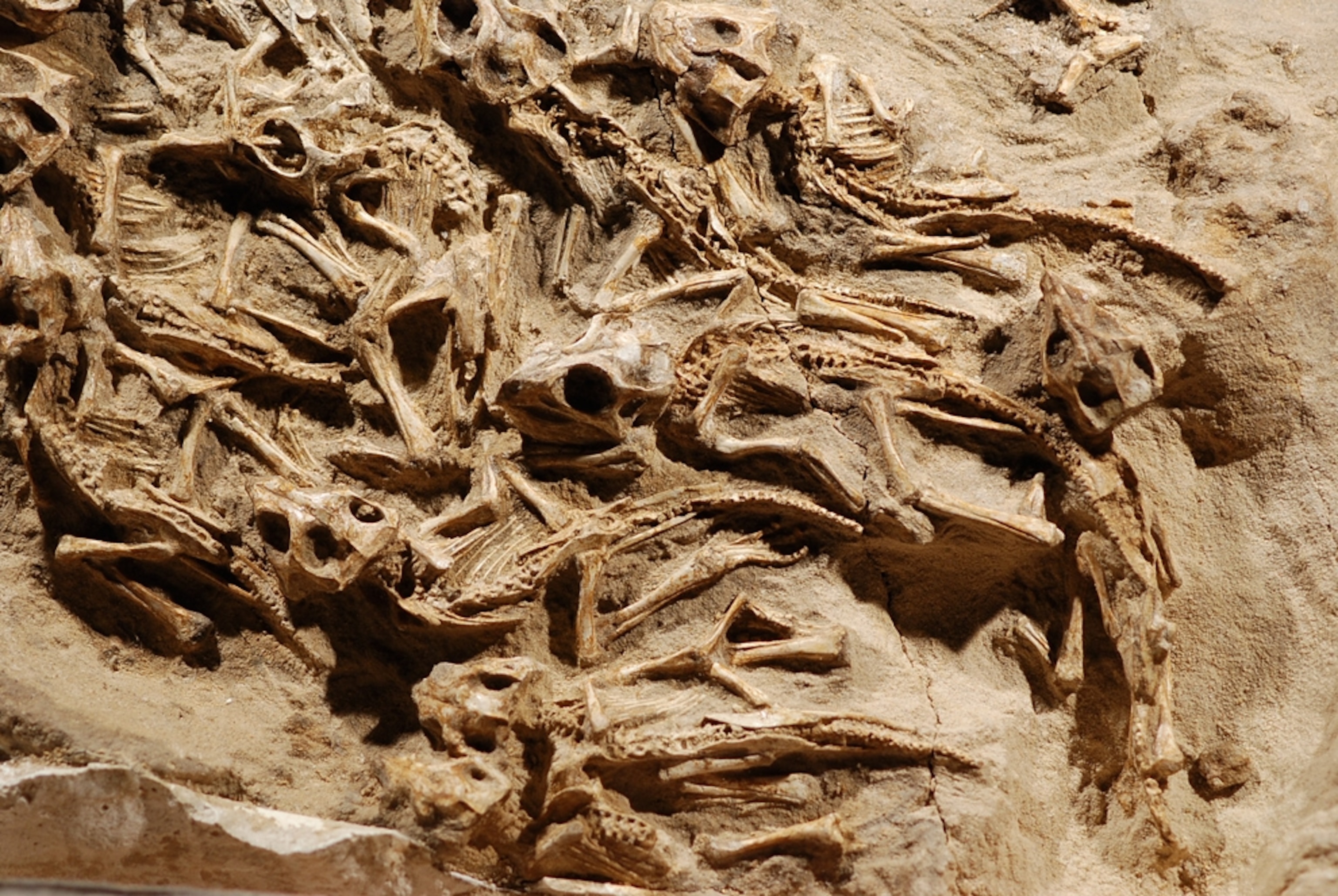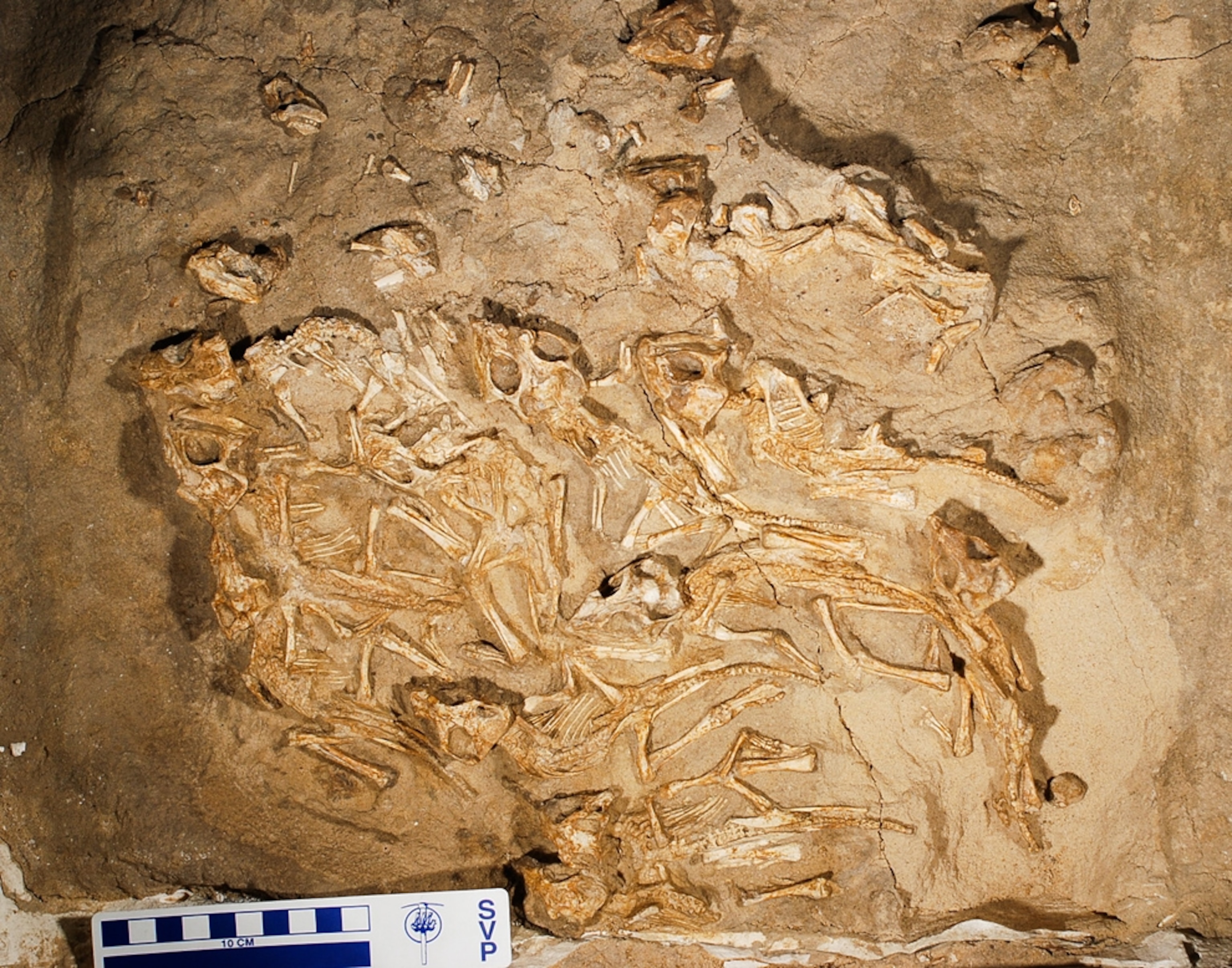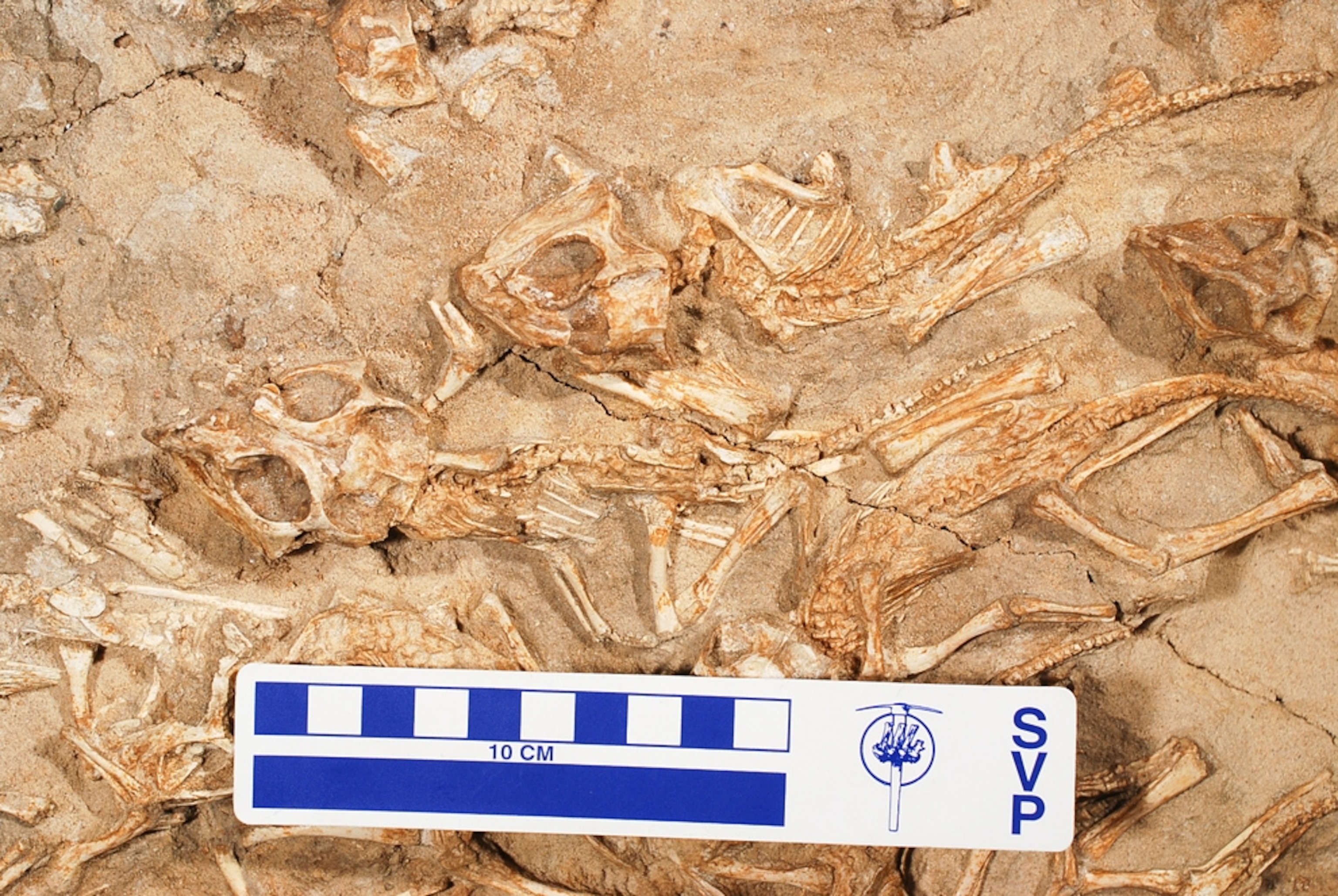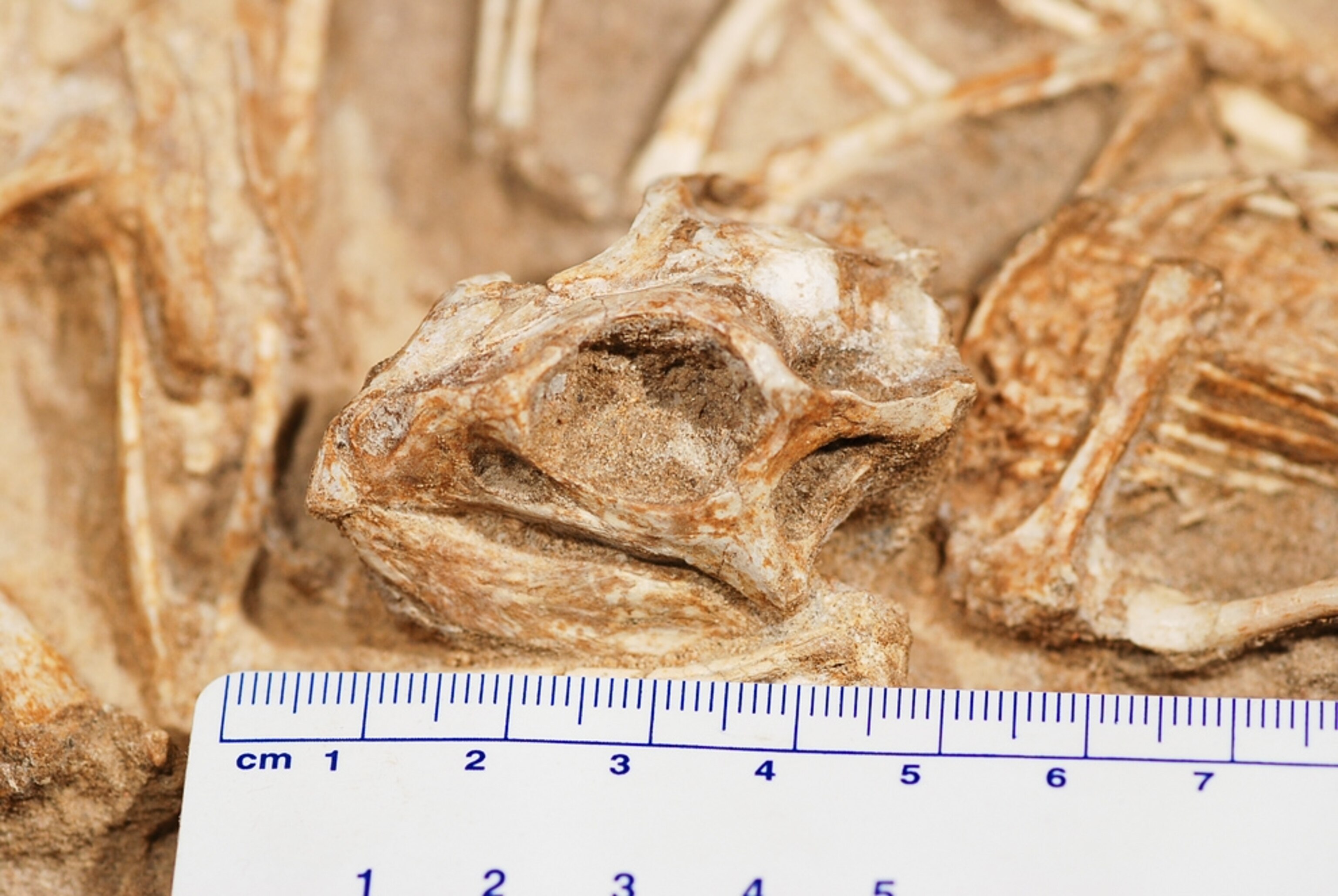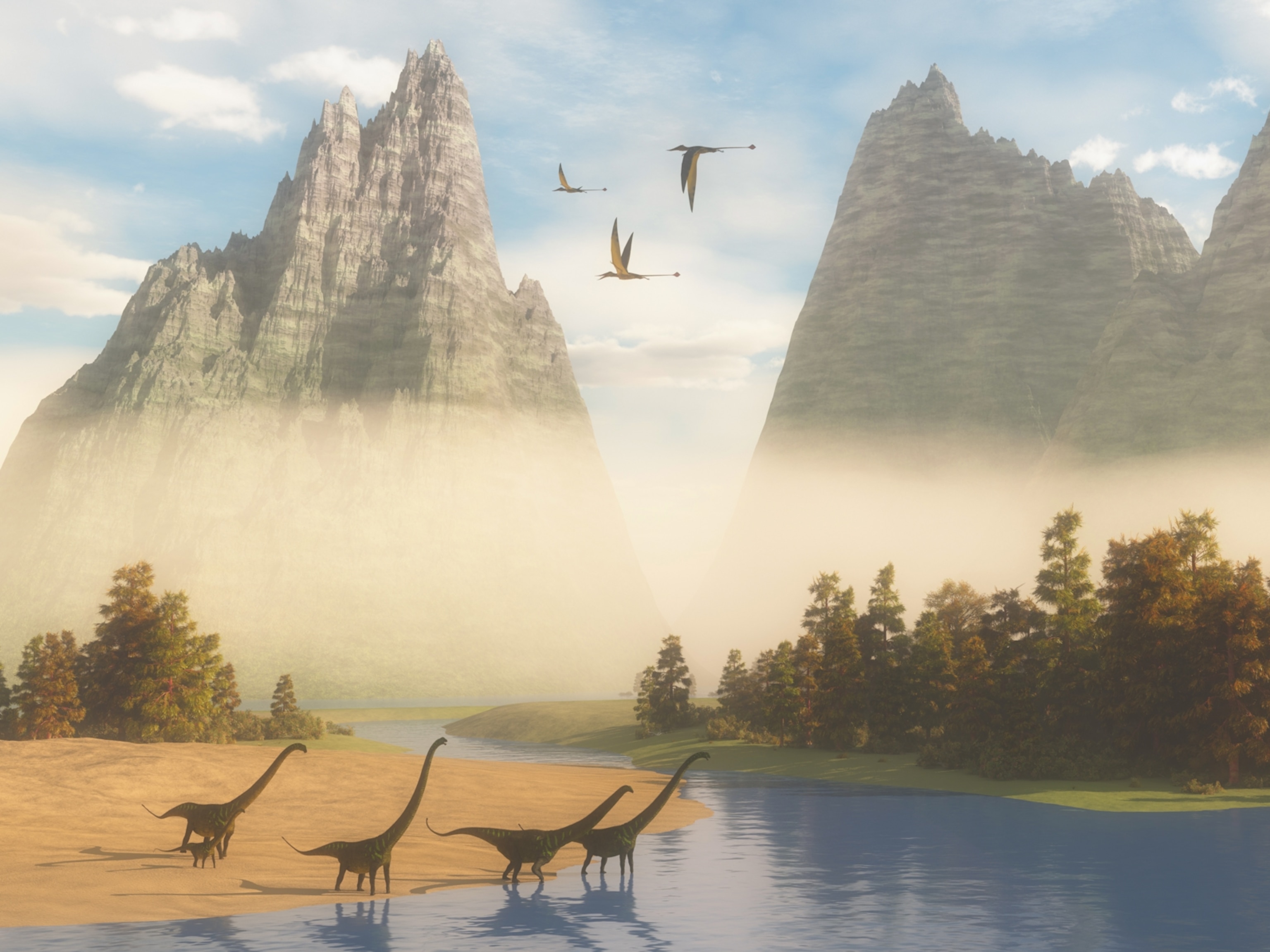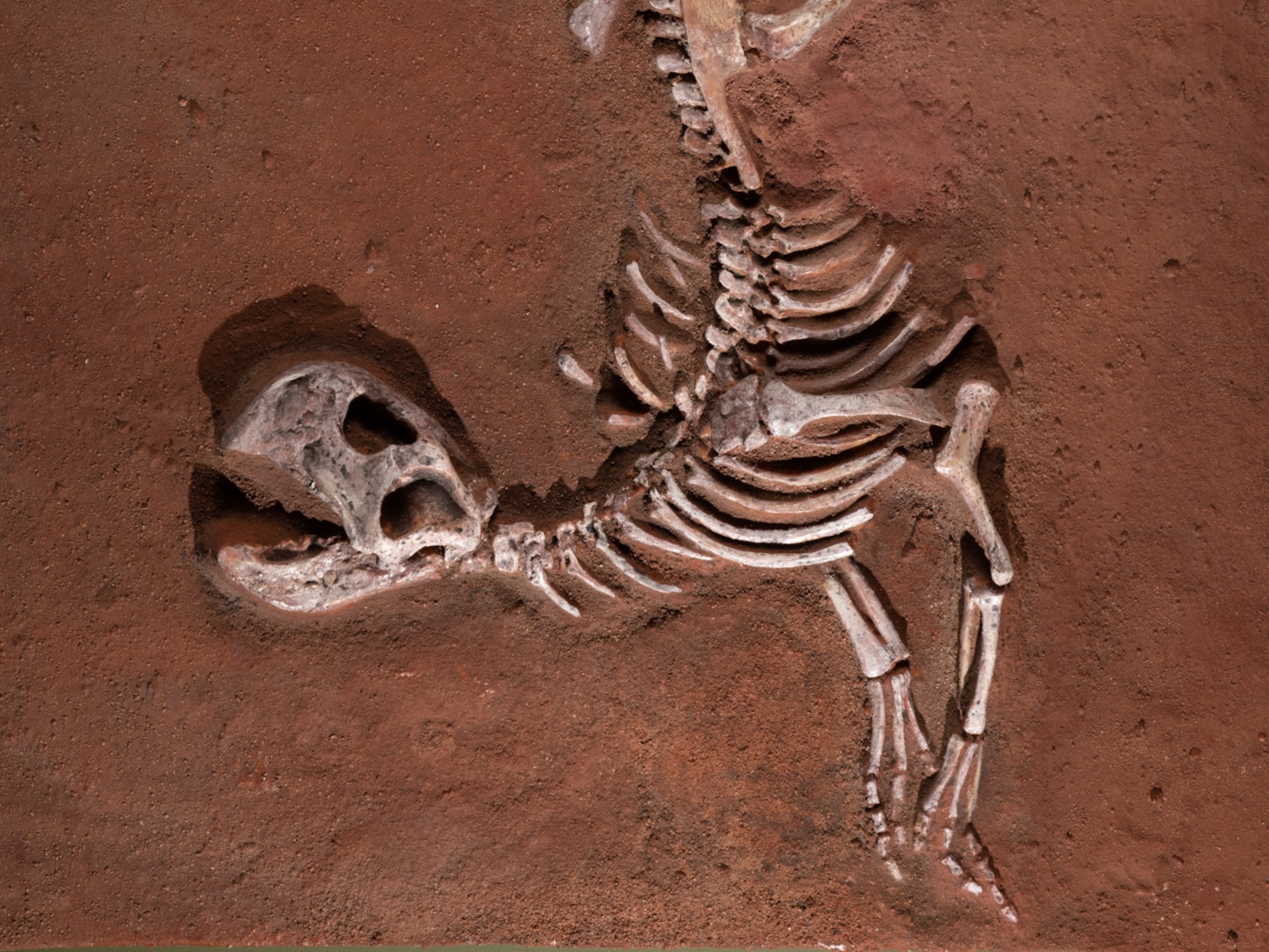Photograph courtesy Khishigjav Tsogtbaatar, Mongolian Academy of Sciences
Pictures: "Gorgeous" Dinosaur Nest Found Full of Babies
A nest full of dinosaur babies—fossilized in their "last, bug-eyed, terrified minutes"—suggests Protoceratops parents nurtured their young.
November 29, 2011
